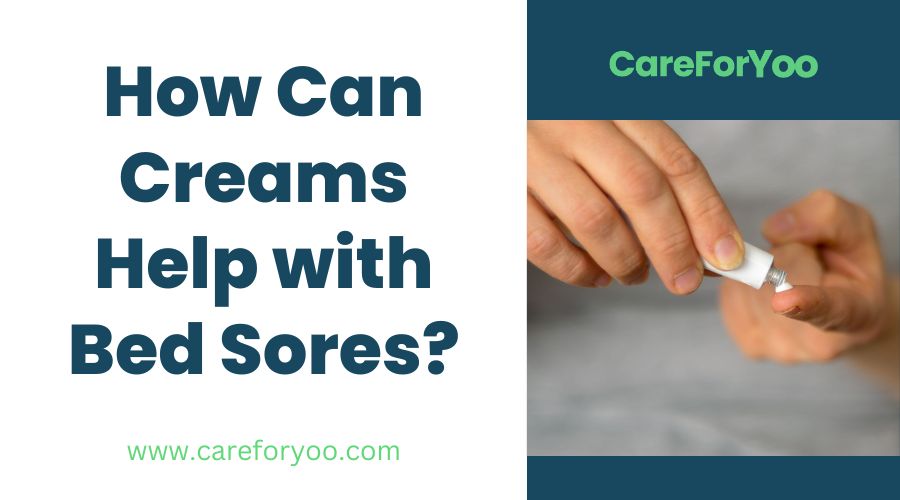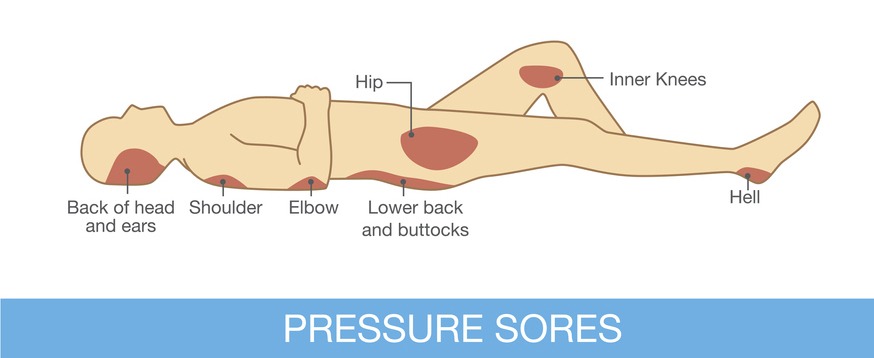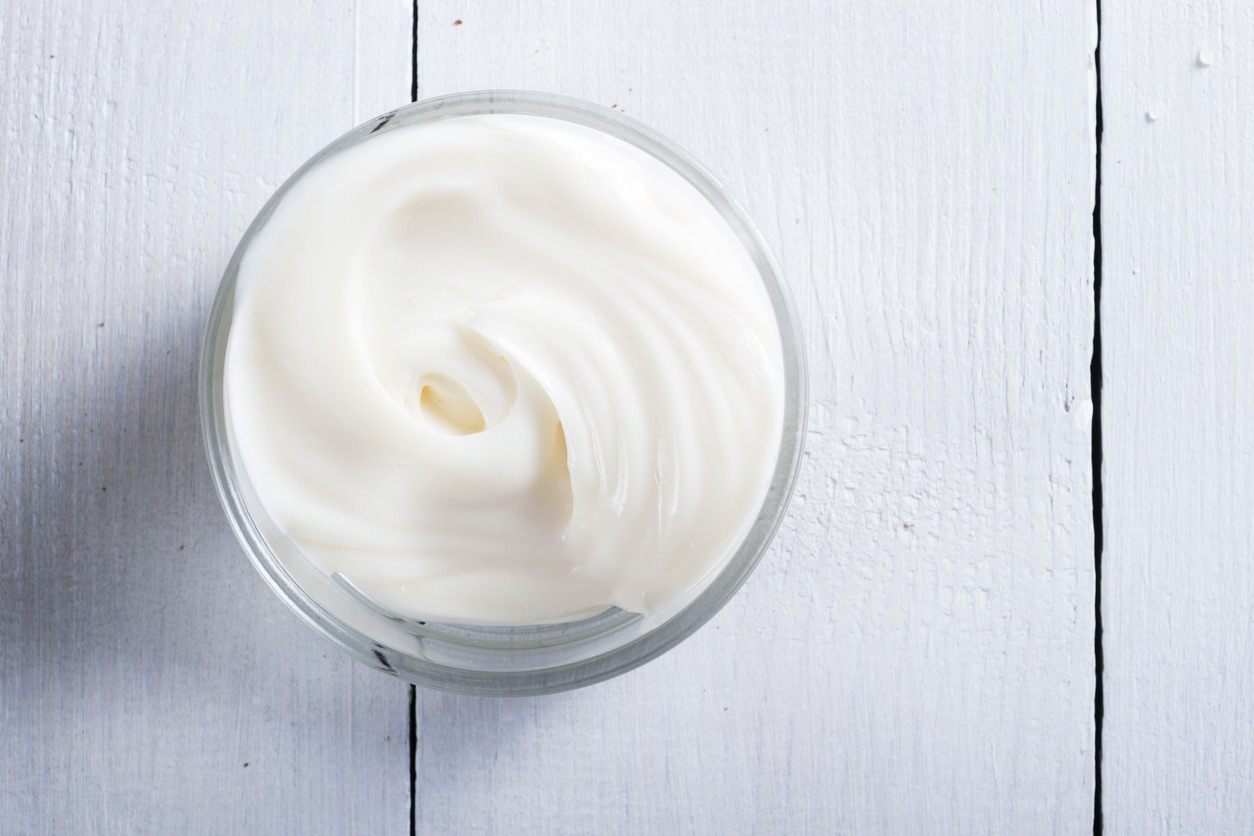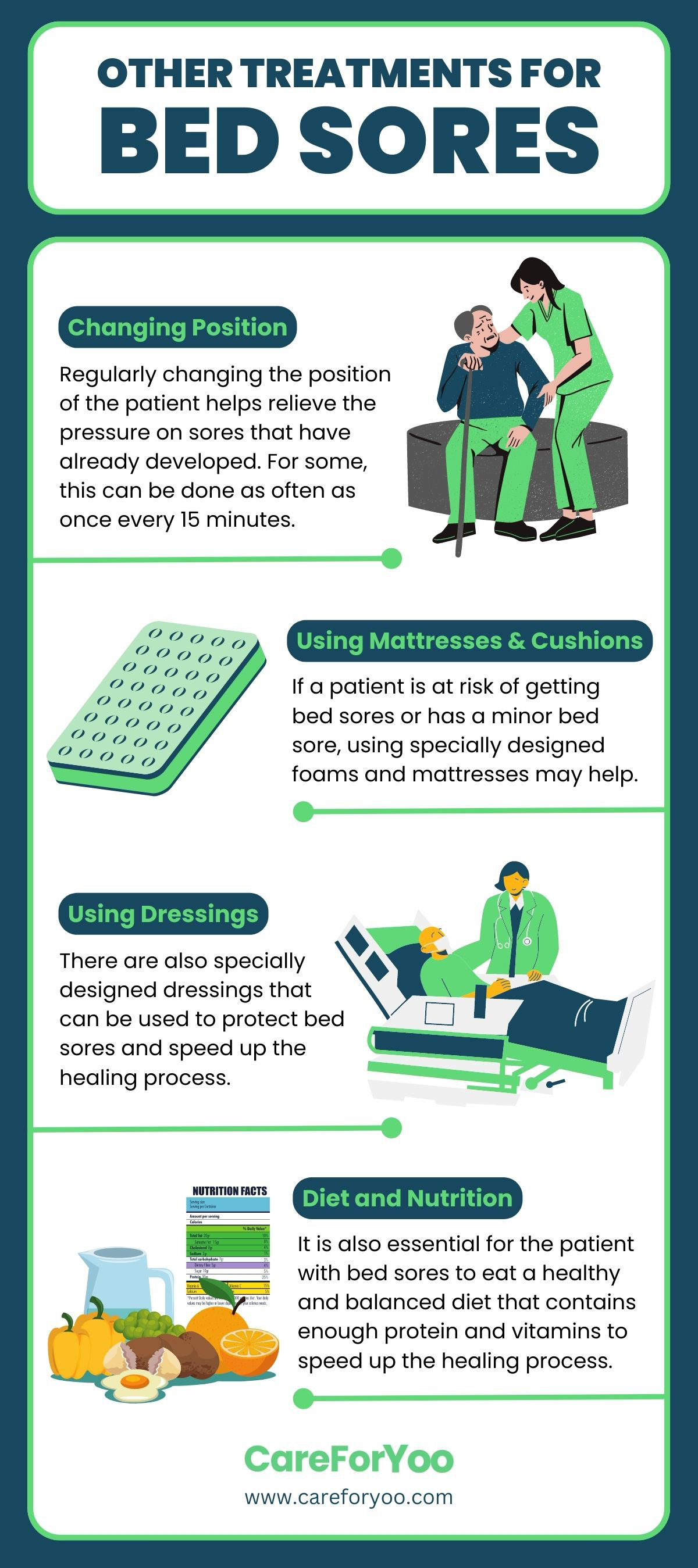A bed sore, also known as a pressure sore, is a very uncomfortable condition that is often experienced by seniors who have mobility issues. People who spend a long time in one position are at risk of developing bed sores because of unrelieved pressure on one body part. This condition can make the simplest pleasures in life unbearable. In addition to being extremely painful, bed sores also have the capacity to spread all over the body if not treated.
Any part of the body can be affected by a bed sore, and it can also develop fast. Pressure sores create a cone-like area of damage. What you can see on the surface of the skin does not actually reveal the full extent of the sore. In fact, by the time evidence or signs appears on the outer layers of the skin the damage usually has already become much deeper.[1]
Bed sores are painful and potentially serious medical conditions. While they are treatable, they can lead to medical complications if not treated and handled properly. With the right care and creams, you will be able to ease the pain and discomfort caused by bed sores, particularly if it is at an early stage. There are many different creams available for bed sores, and doctors also prescribe some of them. But how can these creams help with the skin condition? If you have the same question in mind, you’re in the right place. In this post, we are giving you information about how creams help with bed sores.
What are Bed Sores?
Bed sores are also called pressure ulcers or decubitus ulcers. They are injuries to the skin and underlying tissues caused by prolonged pressure on the skin. Most of the time, bed sores develop on skin that covers bony areas of the body. The common parts where bed sores occur include the tailbone, hips, ankles, and heels.[2] This means that they can occur when the person is lying in bed, sitting in a wheelchair, or wearing a cast for a prolonged period.
The sores are a problem, especially for the elderly who are bedridden and have sensitive skin. In addition, bed sores are also an indicator of the quality of care they are receiving. The condition is also prevalent in people who have underlying health issues, including circulatory problems, diabetes, and poor nutrition.
Bed sores can occur and develop over hours or days. Most minor bed sores heal with treatment, but more severe ones sometimes never heal completely. But there are steps and treatments that you can take to prevent bed sores and help them heal.[2]
Causes of Bed Sores
Bed sores appear when a particular part of the skin does not receive enough amount of blood supply for more than 3 hours. This causes the skin to die, which then becomes visible as the skin begins to change color and look unnatural.
The skin first becomes red, and the affected part becomes painful. Later on, it may turn purple and the pain may intensify. There are also many dangers that accompany leaving bed sores untreated. For instance, there is a chance that the skin may break open, and the area may become infected.
In addition, bed sores may also become deep when left untreated. It can extend into the muscle and the bone. Bed sores are quite slow to heal and require patience and continuous care to treat them. The healing time depends on their severity. The deeper the sores, the longer it will take to heal.
How Creams Help with Bed Sores
After learning about what bed sores are and their causes, let us now go to the main question, which is how creams can help with bed sores. There are various types of creams that can be used on bed sores, depending on the condition of the sores.
For example, if the affected area is infected, doctors may prescribe topical creams that contain antibiotics. Some also like to use creams that can alleviate the pain of the sores, as well as anti-inflammatory creams.[3] However, topical antiseptic or antimicrobial creams and ointments are not usually suggested for treating pressure ulcers. But barrier creams may be needed in order to protect the damaged skin.[4]
Skincare is essential in preventing and treating bed sores. It can help reduce the irritation and swelling caused by bed sores by cooling the surface of the skin, reducing the pressure, and improving the moisture quality of the skin. In order to do this, the best type of cream to use on bed sores is barrier cream.[3]
Bed sores are the harmed area of the tissue in the skin. The affected area may show skin reddening, chafing, and bruising that may be accompanied by numbness and itching. The healing factor of bed sores depends on a lot of factors, such as the severity of the wounds, the area of the wound, or the positioning of the body. One of the steps to take care of chafed skin caused by bed sores is by applying topical solutions like barrier creams.
Barrier creams are the most appropriate products that can protect the skin from bed sores. In addition to the nutritional benefits that come with these creams, they also have gentle cleansing agents that can moisturize the skin from bed sores. Barrier creams may also protect the skin from irritation due to prolonged lying down on the bed, wearing a soiled diaper for too long, or sitting in a wheelchair for hours.
Below are some of the ways barrier creams may help with bed sores:
Keeps the Skin Hydrated
Barrier cream can keep the affected area moisturized, and it manages troubles with bed sores. It retains the hydration of the skin that traps water in the epidermis with emollients. This type of cream is specifically designed for people who have dry and sensitive skin due to water loss. Patients who have bed sores lose so much liquid in their bodies due to sweat and urine. Therefore, applying barrier cream to the affected part of the skin may help revert it to its normal state.[3]
Protects the Skin from Agents of Irritation
Applying thick barrier cream to the affected area helps the skin fight germs, bacteria, dirt, and viruses, preventing the bed sores from being infected. When you have bed sores, it makes you vulnerable to any irritation that may cause damage to the skin. Therefore, using a barrier cream on the area where the bed sores are, helps the skin in that part to regenerate and rejuvenate.
The natural skin barrier can be damaged by low humidity and temperature, which weakens the ability of the skin to heal by itself. Therefore, barrier cream is essential to help the skin cool down for a while.[3]
Protects the Microbiome of the Skin and Keeps the Skin Moisturized
Barrier creams may also protect the microbiome of the skin due to their protective effects against irritants. They can act as a thick layer that supports the defense of the skin and help retain enough skin moisture, keeping the affected area moisturized. Barrier creams are also great to apply to bed sores as they protect the skin from cold weather and prevent excessive sweat that may cause irritation.[3]
Other Treatments for Bed Sores
There are other treatments for bed sores that you can do alongside using topical creams and ointments. Below are some of them:
Changing Position
Regularly changing the position of the patient helps relieve the pressure on sores that have already developed. For some, this can be done as often as once every 15 minutes. But others may need to be moved or changed position only once every 2 to 4 hours.[4]
Using Mattresses and Cushions
If a patient is at risk of getting bed sores or has a minor bed sore, using specially designed foams and mattresses may help. These may help alleviate the pain and remove pressure from the affected parts of the body.[4]
If you are wondering what your options are, check out our Guide to Picking the Right Mattress for Your Needs for more tips and recommendations.
Using Dressings
There are also specially designed dressings that can be used to protect bed sores and speed up the healing process. These include alginate dressings made from seaweed, hydrocolloid dressings that contain gel, and other dressing types like foams, fibers, and films.[4]
Diet and Nutrition
It is also essential for the patient with bed sores to eat a healthy and balanced diet that contains enough protein and vitamins to speed up the healing process. Drinking plenty of fluids to avoid dehydration is also essential.[4]
If you are looking for more options, you may read our post about Treatment for Bed Sores on Buttocks – The Complete Guide.
Conclusion
Bedsores are indeed uncomfortable and can be very difficult to heal, especially for patients with underlying medical conditions. But that does not mean you can’t treat them. Luckily, there are topical medications you can use, like barrier creams, that may help protect the bed sores and speed up their healing process. But if there are signs of infection, such as fever, drainage from a sore, bad odor, changes in skin color, or swelling around a sore, make sure that you seek immediate medical care. We hope this post helped you learn more about how creams can help with bed sores.
If your loved one is suffering from bed sores, you may also read our Guide for Picking the Right Treatments for Bed Sores for more tips and recommendations.
References
[1] AgingCare.com, E. (2018, September 12). Caregiver tips to prevent and heal bed sores. AgingCare.com. Retrieved January 19, 2023, from https://www.agingcare.com/articles/caregiver-tips-to-prevent-and-heal-bed-sores-442487.htm
[2] Mayo Clinic, E. (2022, April 19). Bedsores (pressure ulcers). Mayo Clinic. Retrieved January 19, 2023, from https://www.mayoclinic.org/diseases-conditions/bed-sores/symptoms-causes/syc-20355893
[3] Adina, E. (2022, October 30). Does barrier cream work for bed sores? Avacare Medical Blog. Retrieved January 19, 2023, from https://www.avacaremedical.com/blog/does-barrier-cream-work-for-bed-sores.html
[4] NHS, E. (2020, April 15). Pressure Ulcers Treatments. NHS choices. Retrieved January 19, 2023, from https://www.nhs.uk/conditions/pressure-sores/treatment/






